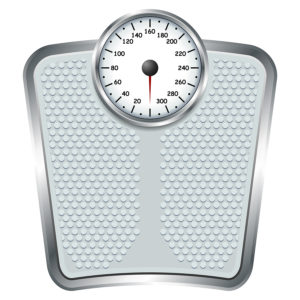How Waist Size Can Affect Health
A lot of people put on some extra pounds as they get older. Waistlines tend to expand a bit. The natural tendency to slow down is often blamed for weight gain with age. In addition, age related changes can affect metabolism. Experts warn against obesity because of the many health problems it can lead to.

However, what you may not hear as much about is how a larger waistline, even without obesity, can impact health. A recent study strengthens the concerns doctors have about waist sizes in older adults, particularly women.
Waist Size and Women’s Health Study
In a study led by Wei Bao, an epidemiology professor at the University of Iowa, researchers looked at data from 156,000 women in the United States who were between 50 and 79 years of age. They tracked these women’s health from 1993 to 2017. Their results found that women who had a body mass index (BMI) within normal ranges, but had a larger waist size, had a 31 percent higher risk of death than did those who had a normal BMI and smaller waist. The two most common causes of death in those with larger waistlines were heart disease and cancers that are related to obesity.
Currently, medical guidelines only recommend using BMI as a measurement of a person’s risk for health problems related to obesity. However, the results of the study highlight the need for doctors to use more than just weight to determine conditions older adult women are at risk for.
How to Measure Waist Size
To determine if your older family member is at risk for conditions due to waist size, you first need to know what is considered normal and how to properly measure the waist. A normal waist size for women is 35 inches and under. For men, it is 40 inches and under.
To measure the waistline correctly, the Mayo Clinic offers the following steps:
1. Find the hipbone.
2. Wrap a measuring tape around the person’s body at the level of the hipbone. The tape measure should fit snugly but should not press into the skin. Keep the tape measure parallel to the floor.
3. Have the older adult relax and exhale before you read the tape.
If your aging relative would benefit from losing some weight and reducing their waist size, home care services can help. Home care services providers can prepare meals that are low in calories and promote weight loss. Home care services providers can also encourage more physical activity in the older adult by keeping them active around the house, going for walks with them, or driving them to exercise classes or facilities.
Sources: https://www.webmd.com/diet/obesity/news/20190724/waist-size-key-to-health-even-without-obesity#1 https://www.nhlbi.nih.gov/health/educational/lose_wt/risk.htm https://www.mayoclinic.org/healthy-lifestyle/weight-loss/expert-answers/waist-size-and-life-expectancy/faq-20348574
If you or an aging loved-one are considering Home Care Services in the Kansas City MO area, please contact the caring staff at Elder Care of Kansas City, today. Proudly serving Jackson, Clay, Platte and Cass Counties in Missouri as well as Johnson and Wyandotte Counties in Kansas for over 30 years. Call us at 816-333-3322.
- Smart Ways To Make Showering Safer For A Senior Parent - May 16, 2025
- What Types of Situations Lead to Personality Changes in Seniors? - May 6, 2025
- Helping Seniors Overcome Insomnia - April 21, 2025
